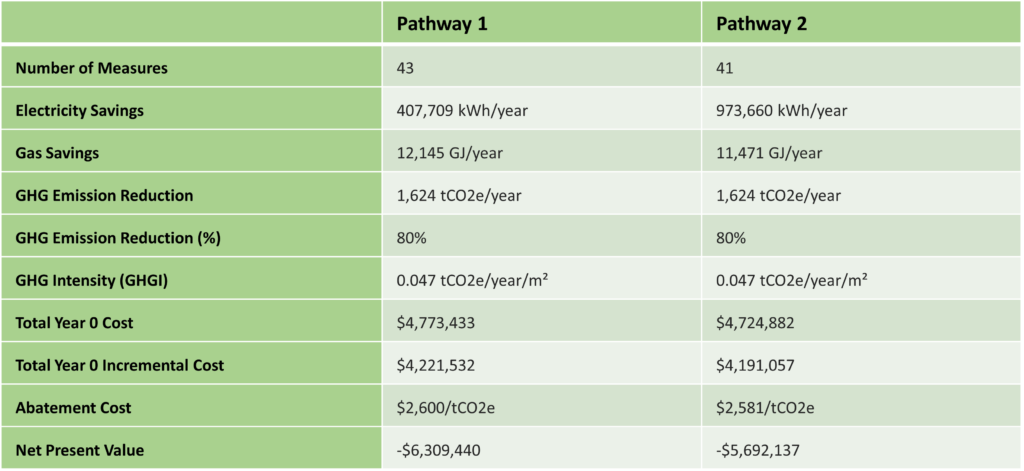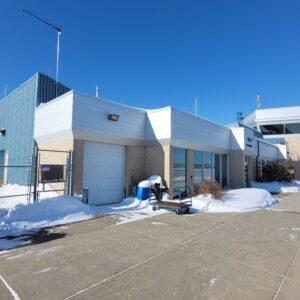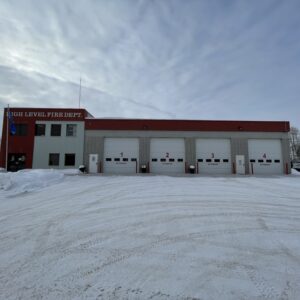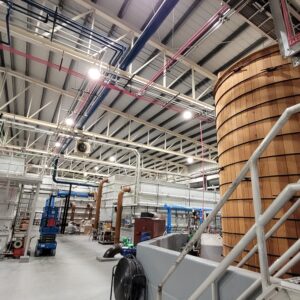
Case Study: Town of High Level GHG Feasibility Study
- Case Studies
-
Oct 31
- Share post

Overview
The Town of High Level in Northern Alberta recently took the initiative to create a more sustainable community by partnering with Sustainable Projects Group (SPG) to develop a Greenhouse Gas (GHG) Emissions Reduction Pathway Feasibility Study for their municipal building portfolio. The primary aim of the project was to offer practical insights into reducing emissions associated with municipal buildings. The study is intended to serve as an informative tool for organizational decision-making and support community sustainability plans currently being developed. This study was generously funded by the Green Municipal Fund (a program of the Federation of Canadian Municipalities). The completion of this study also allows the Town to access significant funding opportunities from the Green Municipal Fund Capital Projects Program (links provided below).
GHG Reduction Pathways
GHG reduction pathway feasibility studies help to integrate energy and GHG reductions into longer-term plans for managing community buildings. These studies enable municipalities to identify a sequence of GHG reduction measures — the “GHG reduction pathway”— that will help to reduce GHG emissions for community buildings while managing capital costs and reducing operating costs.
The study adopts a holistic and comprehensive approach and places emphasis on stakeholder engagement, ensuring study findings are relevant and actionable to the community.
Two specific GHG reduction pathways were established for this project:
Pathway 1:
Achieving a 50% reduction in GHG emissions within 20 years, followed by an 80% reduction within the same time frame (minimum performance).
Pathway 2:
Achieving an 80% reduction in GHG emissions within 5 years, emphasizing a short-term deep retrofit.
To develop the pathways, SPG conducted an exhaustive study on six municipal buildings, which encompassed several components:
Building Condition Assessments (BCAs): SPG performed BCAs to evaluate the condition and performance of the buildings. This assessment helped in identifying areas for potential improvements.
Energy Audits: Level 2 energy audits were carried out to assess the current energy consumption and identify energy-efficient measures that could contribute to GHG reductions. This included site visits of each building as well as interviews with building operators.
Calibrated Energy Modelling: SPG carried out comprehensive energy modelling of each facility using RETScreen.
Stakeholder Workshops: A design and decision making workshop held between building operators and Town leaders allowed High Level staff to express their preferences and interests in potential GHG reduction measures.
Building Facilities
Identification of GHG Reduction Measures
Based on the data gathered and discussions with building staff, SPG identified a range of GHG reduction measures. Key recommended measures included:
- Heat Pumps
- High-efficiency Makeup Air Units
- Hydronic Heating Additives
- Instantaneous Water Heaters
- Intelligent Parking Outlets
- LED Lighting
- Lighting Controls
- Liquid Pool Covers
- Low Flow Water Fixtures
- Permafrost NMR RTU Application
- Pipe Insulation
- Programmable Thermostats
- Solar Air Heaters
- Solar PV (Photovoltaic)
- Variable Frequency Drives (VFDs)
- Carbon Offsets
Case Study Findings
The feasibility study resulted in two distinct GHG reduction pathways:

These findings provide High Level with valuable insights into the potential GHG emissions reductions achievable through various measures. They serve as a foundation for informed decision-making regarding future actions to reduce GHG emissions in the municipality.
Note that the Net Present Value shown above does not include capital offsets from funding programs. There are several programs available, including the GMFs GHG Reduction Pathway Retrofit, which considerably offsets capital costs involved with implementing retrofits.
Conclusion
This project represents a significant step toward sustainable and environmentally responsible municipal buildings. The study equips High Level with the knowledge and data required to make informed decisions in pursuit of its environmental goals. Furthermore, High Level is now positioned to seek funding opportunities to implement these GHG reduction measures and contribute to a more sustainable future.
This is the end of the Case Study on the Town of High Level GHG Feasibility Study; providing valuable insights into the town’s GHG reduction initiatives. Contact SPG today to explore how we can guide you on a similar path to a greener, more sustainable future!
Explore Funding Opportunities
GMF Study:
GMF Capital Projects:
Contact SPG for information on additional funding opportunities.






